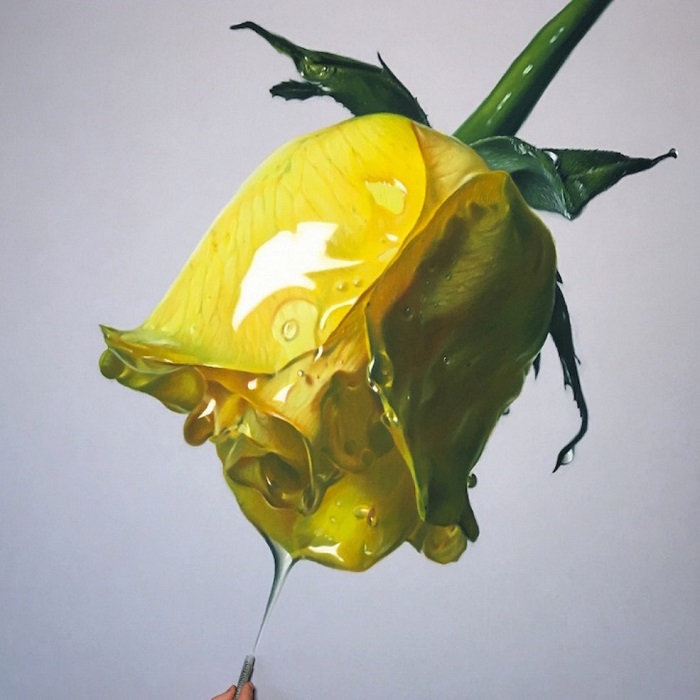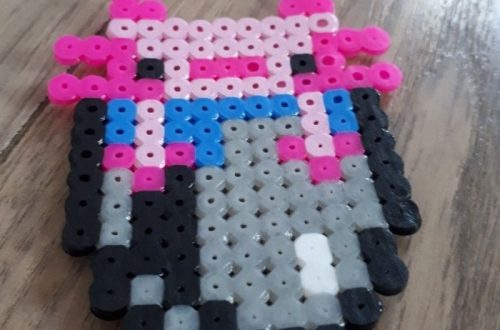Part 1: Getting Started with Oil Pastel Painting
Oil pastel painting is a versatile and vibrant medium that can produce stunning artwork. Whether you’re just starting out or looking to improve your skills, mastering the art of oil pastel painting requires patience, practice, and a few essential techniques.
1. Understanding Oil Pastels
Oil pastels are a fascinating artistic medium, composed of pigment, wax, and non-drying oil. They offer a diverse color palette and blend easily for rich, textured effects. Their convenience is evident as they don’t require solvents or additional mediums, providing a clean and straightforward painting process, unlike traditional oil paints. These attributes make oil pastels highly attractive to artists seeking an expressive, versatile, and low-maintenance medium for their creative endeavors.
2. Choosing the Right Paper
Selecting the appropriate paper is crucial for successful oil pastel artwork. Heavyweight, textured paper is ideal, as it can withstand the thick layers of oil pastel and offers sufficient tooth for the colors to adhere. Artists should consider experimenting with various paper types to determine which best complements their individual style and technique. Different papers may yield varied results, impacting blending, layering, and overall visual effect. By exploring options such as watercolor paper, pastel paper, or specially designed oil pastel paper, artists can discover the surface that optimally showcases their creativity and maximizes the potential of the oil pastel medium. Ultimately, the choice of paper plays a significant role in the success and visual impact of oil pastel artwork, making it an essential aspect of the creative process.

Part 2: Essential Techniques for Oil Pastel Painting
To create stunning oil pastel paintings, artists must understand and utilize several key techniques to effectively apply and blend colors.
1. Layering
Layering is a fundamental and effective technique in oil pastel painting. It offers artists the ability to create depth, dimension, and richness in their artwork. The process typically commences with a light-colored pastel, gently sketching out the composition. Subsequently, additional layers of various hues are gradually applied, progressively intensifying the colors and enriching the overall visual impact of the painting. This technique allows for the creation of vibrant, multifaceted surfaces, as the colors blend and interact atop one another, producing an engaging interplay of tones and textures. Through meticulous layering, artists can develop nuanced, dynamic pieces that exhibit a captivating fusion of colors, light, and shadow, making it an indispensable tool for oil pastel artists seeking to achieve depth and complexity in their creative expressions.
2. Blending
Blending is a cornerstone technique in oil pastel painting, crucial for achieving seamless transitions and smooth gradients within the artwork. It offers artists the capacity to unite and merge colors, ensuring a harmonious and polished finish. Various methods can be employed for blending oil pastels, including the use of fingertips, blending stumps, or soft cloths, each offering distinct blending outcomes. Experimenting with different blending tools provides artists with the opportunity to explore diverse effects and understand the nuances of each technique. Utilizing fingers may yield a more organic and tactile blend, while blending stumps and cloths can deliver precise and controlled results. By mastering the art of blending, artists can cultivate a broad spectrum of visual textures, transitions, and tonal varieties in their oil pastel pieces, enriching their expressive potential and enhancing the overall aesthetic appeal of their work.
Part 3: Tips for Creating Stunning Oil Pastel Paintings
To create stunning oil pastel paintings, it’s important to keep a few key tips in mind to help you achieve the best results.

1. Use a Fixative
Utilizing fixative spray is vital in safeguarding oil pastel paintings against smudging or smearing. Applying a fixative ensures the preservation of the vibrancy and integrity of the colors. It prevents them from compromising the quality of the artwork or transferring onto other surfaces. By setting the colors in place, the fixative creates a protective barrier, maintaining the artwork’s visual allure and prolonging its longevity. It’s imperative to use a fixative specifically designed for oil pastels to avert any adverse effects on the intended appearance of the artwork. By incorporating fixative into the preservation process, artists can confidently exhibit and handle their oil pastel pieces. This allows the colors to retain their original brilliance and ensures that the artwork continues to captivate viewers and endure over time.
2. Experiment with Surfaces
Exploring alternative surfaces for oil pastel painting can broaden artistic possibilities and introduce captivating textures to the artwork. While traditional paper is a common substrate, experimenting with diverse surfaces such as canvas, wood, or textured fabric can imbue the pieces with unique visual and tactile elements. Canvas, with its woven texture, can add depth and character to the artwork, providing an organic and dynamic backdrop for the vibrant hues of oil pastels. Wood surfaces, with their natural grain, offer a distinctive and rustic aesthetic, augmenting the overall visual appeal of the artwork.
Textured fabrics introduce an additional dimension, incorporating tactile diversity and a sense of depth to the oil pastel paintings. Embracing alternative surfaces allows artists to infuse their pieces with a rich interplay of colors and textures, elevating the expressive potential and enhancing the overall impact of their oil pastel creations. Through exploration and experimentation with different surfaces, artists can unlock new avenues of creativity and innovation in their artistic practice.
Part 4: Troubleshooting Common Issues
Even experienced oil pastel painters may encounter some common issues while working with this medium. Here are some tips for troubleshooting and overcoming these challenges.

1. Dealing with Smudging
One common obstacle encountered in oil pastel painting is the potential for smudging and smearing of the colors. Mitigating this risk involves adopting strategic techniques to preserve the integrity of the artwork. A practical approach to prevent smudging is by working from the top of the painting downward, allowing the layers to set and reducing the likelihood of accidental smearing.
Upon completion of the artwork, applying a fixative becomes essential. It sets the colors in place, ensuring the vibrancy and longevity of the piece. Another proactive measure is utilizing a barrier, such as a piece of paper, beneath the hand while working. This minimizes the risk of inadvertently transferring oil pastel pigment onto unintended areas and impedes accidental smudging. By implementing these preventive strategies, artists can maintain the pristine quality of their oil pastel paintings. They safeguard them against potential smudging and preserve the meticulous details and vibrant hues that characterize their creations.
2. Cleaning Oil Pastel Stains
Accidental occurrences, such as oil pastel colors getting on hands or clothes while painting, are not uncommon. Adequately addressing these situations is essential to maintain a clean workspace and preserve clothing. When oil pastel stains are present on hands, effectively removing them can be achieved by washing with soap and warm water, ensuring thorough cleansing to eliminate residual pigment. In the case of clothing, treating the stains promptly is crucial. Pre-treating the affected areas with a quality stain remover or liquid detergent before laundering can effectively lift the pigment from the fabric.
By addressing these incidental messes diligently, artists can swiftly and efficiently clean up any unexpected mishaps. This sustains a tidy creative environment and preserves their clothing. With these simple and practical techniques, artists can promptly resolve any accidental staining. This allows them to continue their artistic endeavors with ease and ensures that their oil pastel artwork remains a clean and enjoyable process.




